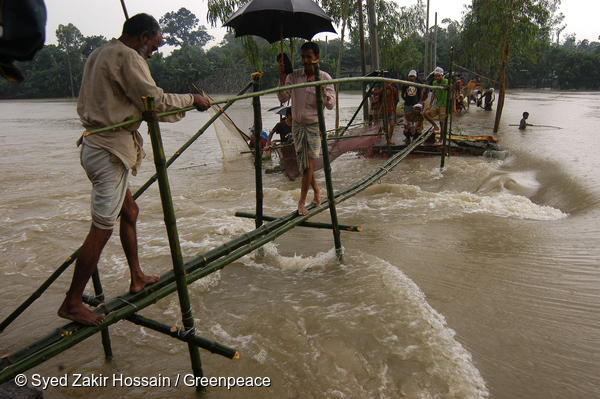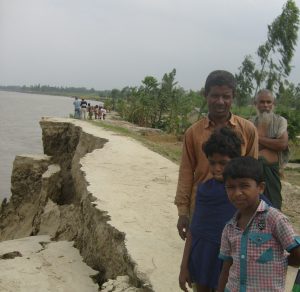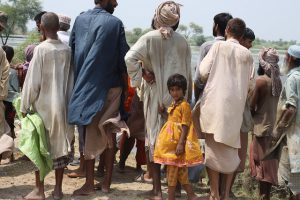A landslide early warning system in hilly areas of Bangladesh has potentially saved hundreds of lives in a region where landslides are becoming a growing hazard.
Weather stations monitor rainfall and sends text messages to warn people of impending landslides hours before the disaster takes place.
The text messages are sent to the mobile phones of ten officials in different government agencies, who can take immediate action and evacuate people from danger areas.
“So far we have set up four devices in two districts,” said Dr Md Nelahl Uddin, director general of the Geological Survey of Bangladesh (GSB). His organisation is working to reduce losses from landslides and earthquakes and identify embankments vulnerable to floods, with support from the Norwegian Geotechnical Institute.
The automatic weather stations monitor and predict rainfall, powered by solar panels. Two stations have been installed in the city of Chittagong, the country’s second largest city, one in the coastal fishing port of Cox’s Bazaar and one in the nearby sub district of Teknaf.
Nearly half a million people live in areas at high risk of landslides in the hilly region of Bangladesh. With a tropical monsoon climate, 90% of rain falls between June and October, often triggering landslides
The stations also send local rainfall data at regular intervals to an online database so patterns can be analysed to improve the warning system and flood forecasting.

The GSB analysed existing data to determine the rainfall threshold at which landslides become a risk. When the rainfall exceeds these thresholds, the weather stations automatically send SMS text messages to registered personnel.
“As per our survey, the rainfall threshold values have been selected: 100 millimetres of rainfall in three hours; 200 millimetres in 24 hours; and 350 millimetres in three days,” said Reshad Md. Ekram Ali, a director at GSB who is responsible for the early warning system.
The system has worked well so far, he said. His team has received three landslide warnings so far and evacuated over 1,000 people living in the hill slopes of Chittagong, Cox’s Bazar and Teknaf.
There system can still be improved however. Twenty people have died this year in five separate landslide incidents. There are still no devices set up in the landslide prone region of Bandarban and sometimes landslides are triggered by light rainfall, because people have cut away mud from steep slopes, increasingly the likelihood of landslides. In such cases the warning system fails to alert people.
Though the rainfall is the main trigger, development and deforestation in the hills also contribute to the growing number of landslides.
Distrust in early warning system
Not everyone trusts the new system yet. On July 25, the deputy commissioner of Cox’s Bazar, Md. Ali Hossain, received a warning message about a potential landslide amid torrential rain. The district administration took prompt action to evacuate people with the help of volunteers. Yet some people did not heed the warning because they were not convinced by the new system.
“After a few hours, the landslide took place in the middle of the night and four shanty houses were buried,” said Md. Ali Hossain. Five people died and four others were rescued after the landslide took place, he added.
Rainfall patterns in Bangladesh have changed in recent years, says experts, with periods of intense rainfall in a short period of time becoming more common. As a result, the frequency and intensity of landslides have also increased, taking lives and damaging property.
Bangladesh is one of the countries in world most vulnerable to natural disasters such as floods, cyclones, river erosion and landslides.
In and around Chittagong city, more than 200 people were killed in landslides between 2006 and 2013, with over 127 killed in a single catastrophic landslide in 2007.







